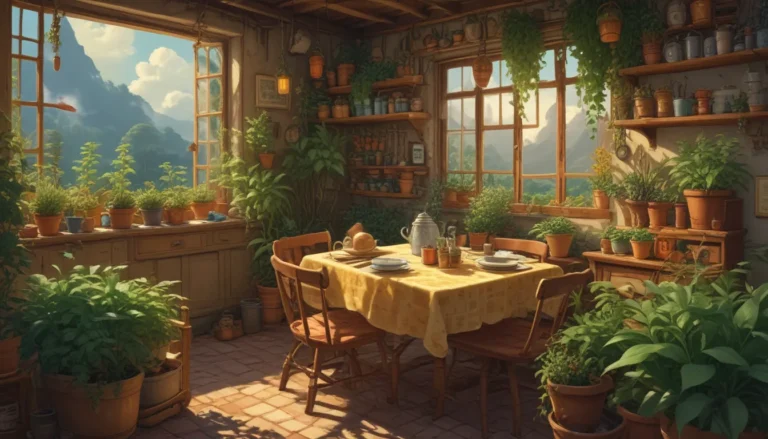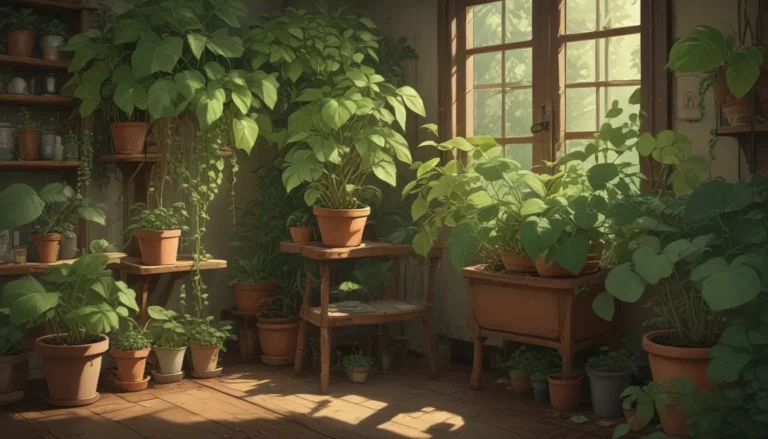A Comprehensive Guide on Hellebore Diseases: Identification and Treatment

Welcome, plant lovers! Today, we are delving into the world of hellebores, those resilient and stunning early-blooming beauties that grace our gardens. While hellebores are known for being trouble-free, there are times when they may fall victim to diseases. In this informative guide, we will explore the common hellebore diseases, how to identify them, and the steps you can take to treat and prevent them.
Understanding Common Hellebore Diseases
Hellebores are generally hardy plants, but they can be susceptible to three main diseases, each caused by different pathogens. Let’s take a closer look at these ailments:
- Black Death
- Black Spot
- Downy Mildew
1. Black Death: A Dreadful Viral Pathogen
Let’s start with the ominous-sounding Black Death, caused by the Helleborus net necrosis virus (HeNNV). This viral infection can manifest as black blotches and streaks on the leaves or flower bracts of mature hellebores. Symptoms may include stunted growth, brown or black veins, and dark spots on the bracts and petioles. Unfortunately, once infected, there is little hope for saving the plants. The best course of action is to remove and dispose of the infected plants to prevent the disease from spreading.
Experts believe that aphids may be responsible for spreading this disease, so it’s essential to treat any healthy plants with insecticides as a preventative measure. Don’t forget to disinfect your gardening tools to avoid further contamination.
2. Black Spot: The Common Fungal Infection
Black Spot, or leaf spot, is a fungal disease caused by Microsphaeropsis hellebori. It presents as black or brown spots on the leaves, with lesions that are rounded in appearance, unlike the streaked patterns of Black Death. As the disease progresses, it can cover the leaves, leading to foliage death and plant collapse. Warm and wet conditions exacerbate this fungus, making it crucial to remove infected foliage immediately to prevent further spread.
Pruning in autumn, removing damaged stems, and improving air circulation can help prevent Black Spot. Additionally, fungicides such as Myclobutanil can be effective in controlling fungal diseases, including Black Spot. Always follow safety precautions when using chemicals in the garden.
3. Downy Mildew: The Moisture-loving Oomycete
Downy Mildew, caused by Peronospora pulveracea, thrives in wet conditions and can be recognized by a fuzzy, mold-like coating on leaves and stems. This disease can lead to leaf and flower drop, eventually resulting in plant death if left untreated. Cultural controls such as watering at the base of plants, providing adequate spacing, and ensuring good drainage can help prevent Downy Mildew. Fungicides like Fung-onil can also be used to manage this infection effectively.
Remember to always be vigilant and take prompt action if you notice symptoms of any hellebore diseases to protect your plants.
Tips for Healthy Hellebores
Despite the potential threats of hellebore diseases, these plants are generally trouble-free when provided with optimal growing conditions. Here are a few additional tips to keep your hellebores healthy:
- Provide Optimal Growing Conditions: Ensure your hellebores receive the right amount of sunlight, water, and well-draining soil.
- Regular Pruning: Prune dead or damaged foliage to promote air circulation and reduce disease risks.
- Clean Gardening Practices: Disinfect tools, remove debris, and maintain overall garden cleanliness to prevent infections.
Remember that prevention is key when it comes to plant diseases. By staying vigilant and implementing good gardening practices, you can enjoy healthy and vibrant hellebores in your garden.
Have you encountered hellebore diseases in your garden? Share your experiences and tips in the comments below!
If you’re looking for more information on hellebores, be sure to explore these informative guides:
- Are Hellebores Toxic to Animals or People?
- The Many Faces of Hellebores: 6 Unique Types to Love
- How to Propagate Hellebores
With a little care and attention, your hellebores will thrive and bring beauty to your garden for years to come. Happy gardening!
Subscribe to our newsletter for more gardening tips and inspiration!





